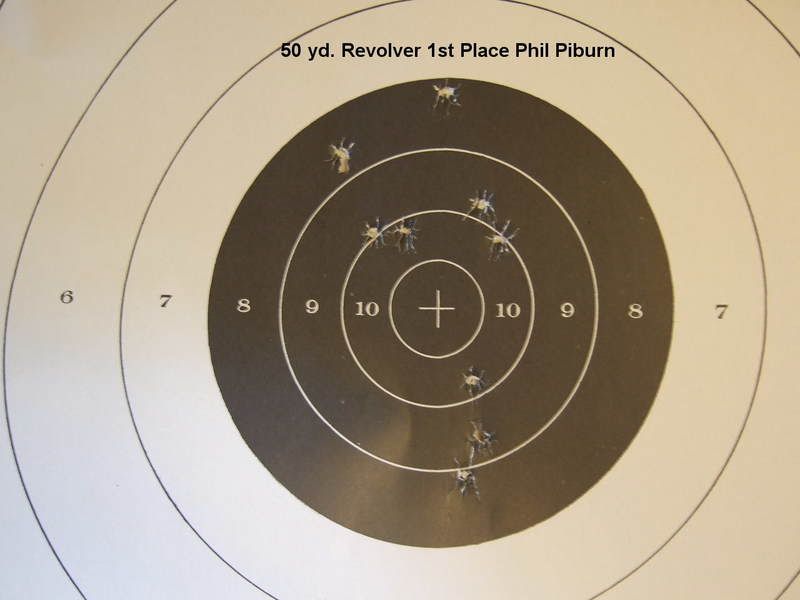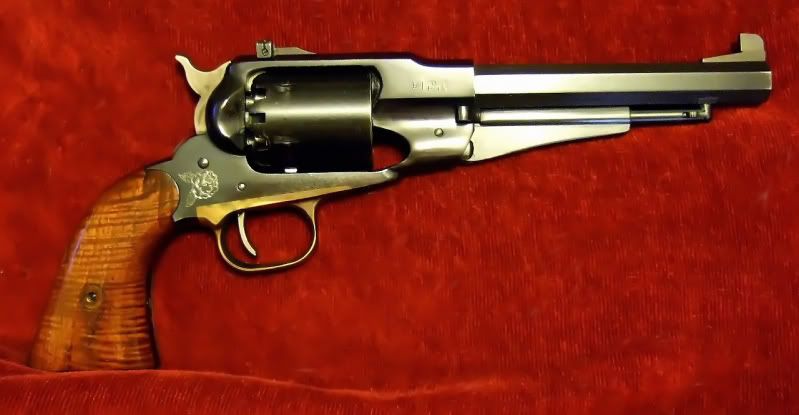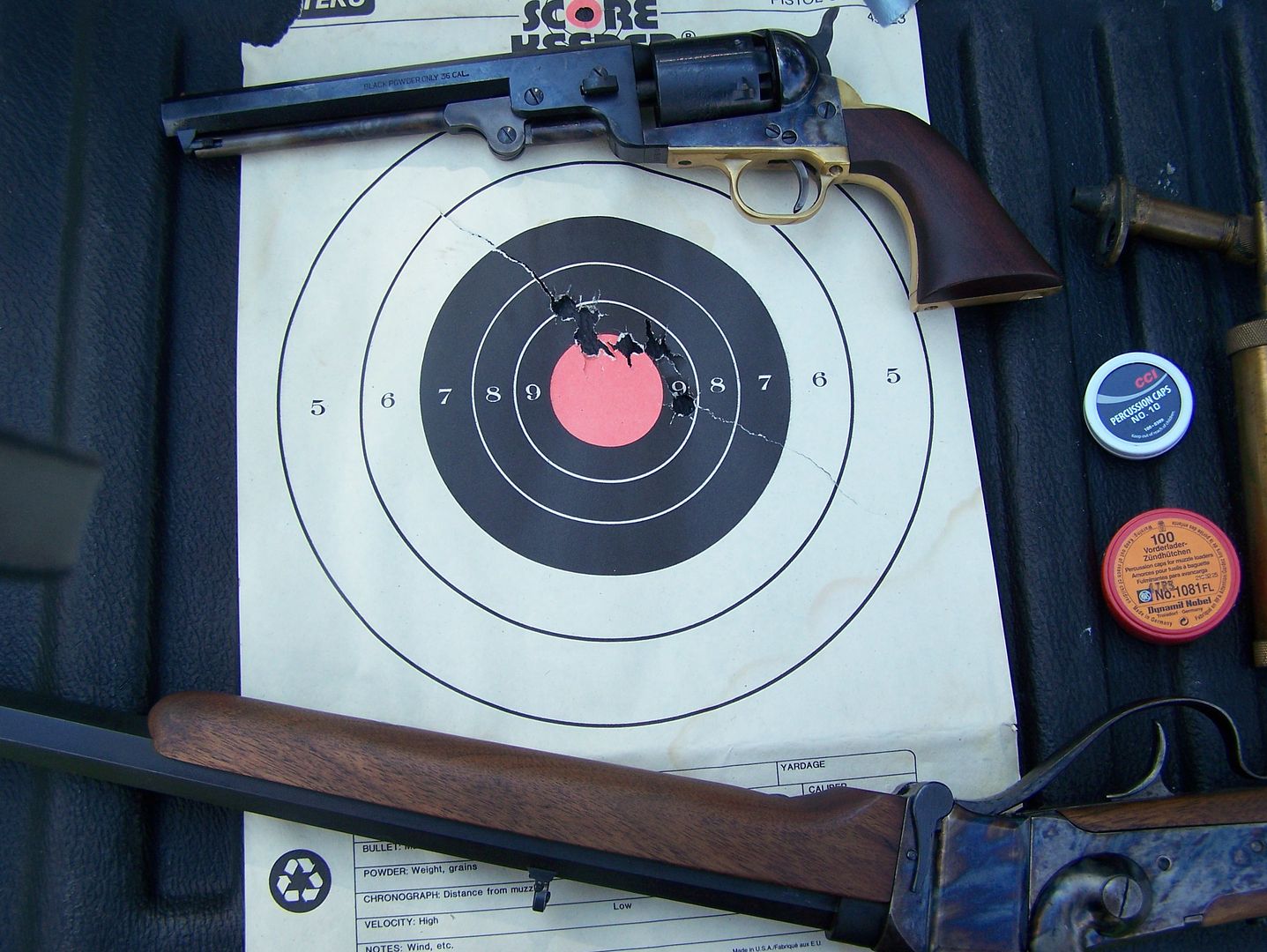I just read the thread on 'which' round ball etc.
I've been shooting b.p. for years & own a few b.p. revolvers.
I'm curious about what dedicated cap 'n ball shooters get in the way
of accuracy & at what distance with what powder, & ball, etc.
I'd be interested in accuracy at, say, 25 yards from a bench rest, caliber, powder load, swagged or cast, & all the goodie info.
I buy Hornady r.b. for all my b.p. arms that shoot r.b. & have no complaints.
Putting Crisco over the seated ball of a cap 'n ball wheel gun does nothing but make a real slippery mess out of the revolver after shot #1.
If the shooter using Crisco fires 1 shot then looks at the seated balls next to that one fired chamber notice that there isn't any Crisco there anymore.
It's all over the revolver, shooter, & everything else.
I often seat a hard card wad over the powder then seat the ball but the wad only serves to take up air space so the ball seats just below the chamber mouth.
I've found my .44s shoot best with charges of 3fg of 25 or so grains, 30 or more (if it fits) generally destroys accuracy.
I have shot rabbits, raccoons & squirrels with a Pietta s.s. with adj. sights.
No it ain't "traditional" but I like it.
I've been shooting b.p. for years & own a few b.p. revolvers.
I'm curious about what dedicated cap 'n ball shooters get in the way
of accuracy & at what distance with what powder, & ball, etc.
I'd be interested in accuracy at, say, 25 yards from a bench rest, caliber, powder load, swagged or cast, & all the goodie info.
I buy Hornady r.b. for all my b.p. arms that shoot r.b. & have no complaints.
Putting Crisco over the seated ball of a cap 'n ball wheel gun does nothing but make a real slippery mess out of the revolver after shot #1.
If the shooter using Crisco fires 1 shot then looks at the seated balls next to that one fired chamber notice that there isn't any Crisco there anymore.
It's all over the revolver, shooter, & everything else.
I often seat a hard card wad over the powder then seat the ball but the wad only serves to take up air space so the ball seats just below the chamber mouth.
I've found my .44s shoot best with charges of 3fg of 25 or so grains, 30 or more (if it fits) generally destroys accuracy.
I have shot rabbits, raccoons & squirrels with a Pietta s.s. with adj. sights.
No it ain't "traditional" but I like it.




